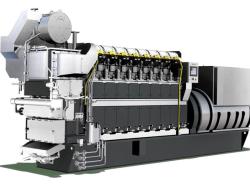
OR WAIT null SECS
© 2024 MJH Life Sciences™ and Turbomachinery Magazine. All rights reserved.
Centrifugal fans
The capacity of centrifugal fans, their availability, investment and maintenance cost can have a significant impact on plant profitability. The plants using these fans have high technical demands and require elaborate engineering inputs.
Ventilatorenfabrik Oelde GmbH responds to these high demands with a so-called tandem drive, while ensuring compliance with various implementation rules of the API (American Petroleum Institute) and additional customer requirements, if any.
The Tandem Drive
A tandem drive for centrifugal fans comprises two drives: a medium or high voltage motor and a steam driven turbine.
The medium or high voltage motor serves to start up the centrifugal fan, since steam from the boiler houses may not be available at the start-up of the plant. As soon as sufficient steam is available, the plant switches to the steam turbine. This is an advantage because in many plants steam is produced in large quantities, e.g. from the operation of heat exchangers.
A further advantage is that in those locations where the power supply is unreliable, the steam turbine as a second drive represents a welcome alternative.
Flue Gas Fan Turbine
Changing drive automatically
Venti Oelde can switch over automatically, without interrupting the production process from one drive to the other. Switching from the electric motor to the steam turbine is unspectacular. The reverse, switching from turbine drive to the electric motor is, however, technically sophisticated.
Relatively simple frequency-controlled motors could be used but these are very cost-intensive. Venti Oelde uses a more favourable version of motors with direct on-line starting. A special coupling configuration limits the torque peaks to a defined, maximum permissible torque, which rules out any damage to the drive and shaft assembly.
When the steam turbine trips, the direct on-line starting electric motor undergoes an extreme acceleration. At that moment„ X“ the electric motor encounters the fan rotor, which has been released by the trip and is decelerating, and accelerates it up to rated speed.
The simulation shows the torque characteristics when the electric motor takes over.
The simulation shows the torque characteristics when the fan drive changes over from steam turbine to electric motor.
Safety right down the line
By designing centrifugal fans with two energetically independent drives, Venti Oelde makes it possible to carry out maintenance work on the drive which is not in service while the plant is in operation. Overrunning one-way clutches, among other things, are used for this purpose to ensure reliable operation.
Process Description
Combustion air and flue gas fans with tandem drive are used in plants that process ammonia, methanol, hydrogen and syngas plants. A hydrogen/steam mixture is converted into a mixture of H2, CO and CO2 and a remainder of CH4 using a steam reformer. The overall reaction in the steam reformer is strongly endothermic and thus requires heat input. The necessary heat is provided by burners which are arranged in the furnace ceiling between the tube rows.
A combustion air fan is used to supply the required combustion air to the steam reformer burner. The flow volume necessary for the combustion air can go up to 550.000 Am³/h depending on the size of the plant.
The combustion air is preheated to the required temperature by the burners. The resultant heat is transferred to the process in the reformer tubes, while excessive heat is carried with the flue gas at about 1050 °C to a horizontal heat exchanger.
The excessive heat generated is utilized in the convection bank for
- generating and super-heating steam
- preheating the hydrocarbon/steam mixture for the steam reformer
- preheating and evaporating process condensate
- preheating the hydrocarbon feed
- preheating the combustion air
Finally, the flue gas is exhausted through the stack to the atmosphere by means of a flue gas fan. The flue gas flow volume can be as much as 1.000.000 Am³/h.



